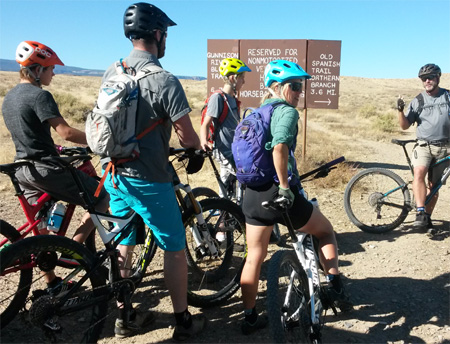Visitor Guide for Colorado’s Delta and Mesa Counties

Photo by Coreen Donnelly, NPS.
OSTA and communities and other stakeholders along the trail are looking at segments that can provide recreational opportunities for hiking, walking, horseback riding, and mountain biking. Your membership and involvement help us meet these important goals.
A prime example is in Colorado. Mesa County, the City of Grand Junction, and OSTA partnered to promote and facilitate a recreational retracement called the “7 Mile Segment” of the Old Spanish National Historic Trail in the mid-1990s. Today, this trail is one of the more popular recreational areas in the vicinity – only minutes from downtown Grand Junction – with two trail heads for parking and easy access. This recreational retracement trail was recognized by the Bureau of Land Management and National Park Service Co-Administrators in 2012 as part of the original North Branch Route of the OSNHT.
In sections of the Trail routes where no roads or developed trails exist and the OSNHT crosses federal public lands (such as NPS, BLM, or United States Forest Service lands) cross country travel by foot, or in some instances horseback, is also possible with careful planning. (Additional information may be available from specific land management agencies.)
In all instances, the Old Spanish Trail Association recommends and advises careful safety consideration by all OSNHT recreational users. Most public lands that the OSNHT crosses are remote, and typical backcountry safety planning and precautions are critical. Travel along overlying vehicle routes also requires safety considerations. Private lands should not be entered/crossed (other than on public roads) without landowner permission.
